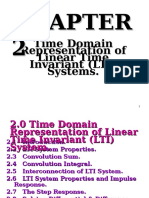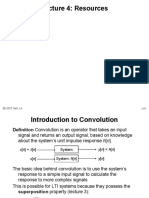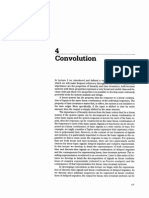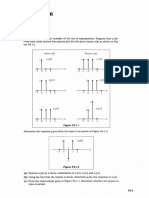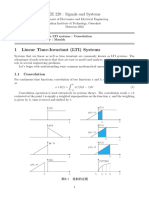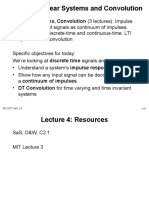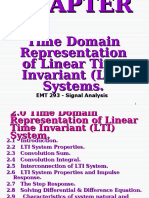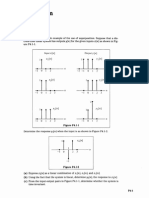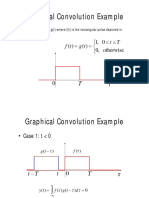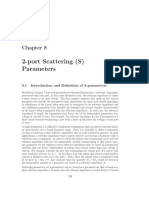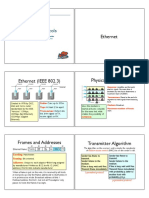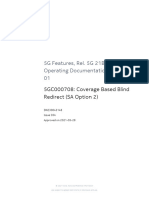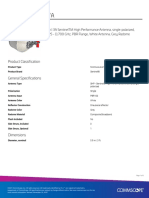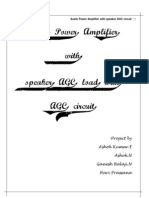0% found this document useful (0 votes)
83 views13 pagesChapter04 Convolution
This document discusses convolution, which relates the input and output of a linear time-invariant system through the system's impulse response. Convolution yields the output of an LTI system given its impulse response h(t) and input x(t). The output y(t) is defined by the convolution integral of x(t) and the time-shifted impulse response h(t-τ). Convolution satisfies properties like commutativity. The document provides an example of convolving two sample pulses to demonstrate the convolution integral step-by-step. It also shows convolving a sinusoidal input with the impulse response of an RC circuit.
Uploaded by
Mimansa SipolyaCopyright
© © All Rights Reserved
We take content rights seriously. If you suspect this is your content, claim it here.
Available Formats
Download as PDF, TXT or read online on Scribd
0% found this document useful (0 votes)
83 views13 pagesChapter04 Convolution
This document discusses convolution, which relates the input and output of a linear time-invariant system through the system's impulse response. Convolution yields the output of an LTI system given its impulse response h(t) and input x(t). The output y(t) is defined by the convolution integral of x(t) and the time-shifted impulse response h(t-τ). Convolution satisfies properties like commutativity. The document provides an example of convolving two sample pulses to demonstrate the convolution integral step-by-step. It also shows convolving a sinusoidal input with the impulse response of an RC circuit.
Uploaded by
Mimansa SipolyaCopyright
© © All Rights Reserved
We take content rights seriously. If you suspect this is your content, claim it here.
Available Formats
Download as PDF, TXT or read online on Scribd
/ 13



